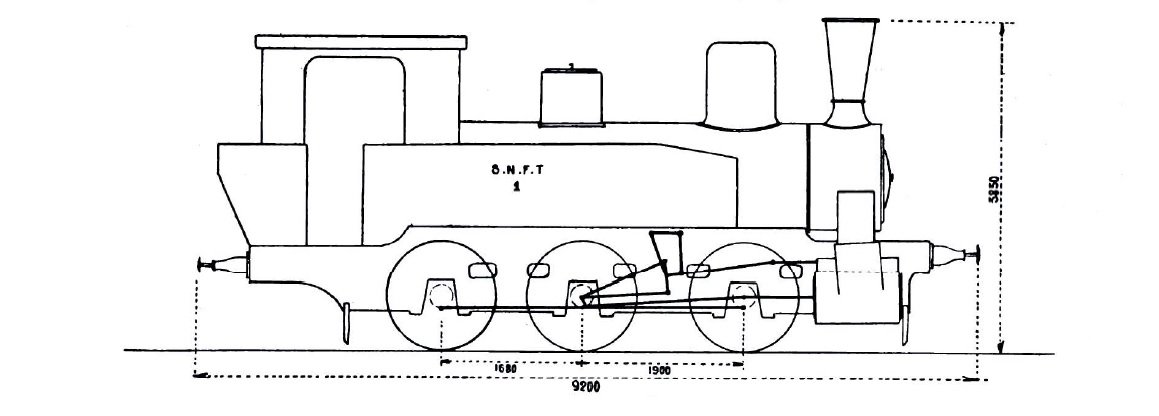The class 1 steam locomotives were supplied in 7 units numbered 1-7 by Officine Meccaniche di Saronno, between 1906 and 1907. Together with the two contemporary steam railcars, they were the first steam locomotives ordered by the Società Nazionale di Ferrovie e Tramvie for service on the public network. Up until the 1930s, this class 1 was followed by another five series of steam locomotives, distributed for service on the public lines which, in addition to the Brescia and Cremona branches, also included the Orbetello-Porto S. Stefano railway. Class 1 can effectively be considered as the forerunner of the SNFT steam locomotives. Class 1 in particular was widely used on the Brescia lines as far as Edolo, where it was usually pulling passenger and slow trains, relinquishing the heavier freight service to the Mallet locomotives a few years later. In the 1910s, some units were temporarily put into service for the company at Orbetello. These were some of the SNFT’s longest serving steam locomotives, with the last being withdrawn from service in the 1960s.
SNFT Locomotive Class 1-7

- Ordinativo: 1906
- Costruzione: 1906/1907
- Esercizio: 1907-1964
- Massa in servizio: Kg.41.260
- Rodiggio UIC: C
- Ruote motrici Ø: 1.330 mm
- Costruttore: Off.Mecc. di Saronno
- Lunghezza fuori tutto: 9.068 mm
- Larghezza: 2.770 mm
- Corsa stantuffi: 630 mm
- Diametro cilindri: 430 mm
- Potenza oraria: 440 CV
- Interasse: 1.900/1.680 mm
- Velocita massima: n.d.
- Pressione di esercizio: 12 Kg/cm²
- Superficie riscaldamento tot.: 99,60 m²
- Capacità casse acqua: m³ 4
- Alimentazione carbone: m³ 2
- Order: 1906
- Build date: 1906/1907
- Service date: 1907-1964
- Service mass: 41,260 Kg
- UIC wheel arrangement: C
- Diameter of the driving wheels: 1,330 mm
- Builder: Off.Mecc. di Saronno
- Overall length: 9,068 mm
- Width: 2,770 mm
- Piston stroke: 630 mm
- Cylinder diameter: 430 mm
- 1-hour power: 440 hp
- Distance between axles: 1,900/1,680 mm
- Maximum speed: not available
- Operating pressure: 12 Kg/cm²
- Overall heating area: 99.60 m²
- Water tank capacity: 4 m³
- Coal supply: 2 m³
A dream fervently pursued by Brescia model railway enthusiasts has finally come true: they have succeeded in dragging an old locomotive, donated to them by SNFT, all the way to the castle. On 17 September, the romantic steam locomotive, properly decked out, will be officially inaugurated as a monument to the merits of the locomotive, which is now, with the advent of electric traction, gradually disappearing from the Italian railways. Yesterday, relocation of the weighty vehicle from the Ferrovie locomotive depot to the upper square at the castle required the large-scale mobilisation of special vehicles from the Ditta Besenzoni: two tractors carried out the challenging removal of the massive vehicle. It was even necessary to shore up the bridge leading to the castle entrance. This special transfer aroused the greatest curiosity from passers-by along the route which ran from Via Dalmazia to Via Cassala, Via Fratelli Ugoni, Via Leonardo da Vinci, and up Porta Trento.
Extract from the Giornale di Brescia newspaper, 8 September 1961.

